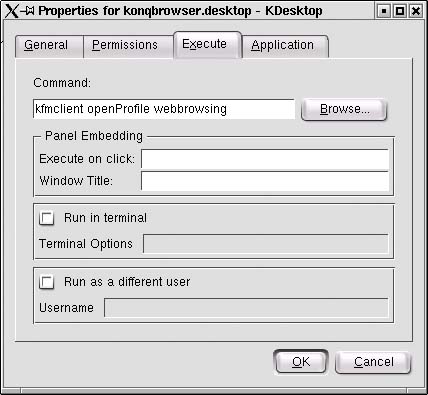Konqueror
To start surfing the Net with Konqueror, you'll need to connect to the Internet?it's a good thing we covered that in Chapter 9. Starting Konqueror as a browser is the same as starting Konqueror any other way. Most distributions, however, have an icon either on the desktop or on Kicker itself to start up Konqueror as a browser. The difference is that in the browser configuration, you can set a home page (more on that later).
Konqueror does pretty much anything you expect from a graphical Web browser and some things you don't. You can go forward and back, save bookmarks (click Bookmarks in the menu bar), download files, or print pages. Because I am assuming that you have all used a browser before, I'll concentrate on the things that I think you will want to know. To start surfing the Net, this is all you have to do. Fire up Konqueror, enter your favorite Web site's URL into the Location: bar window, and press <Enter>. In a few seconds, your Web site's page should appear.
Quick Tip
Notice the black arrow with an x through it, to the immediate left of the Location label. Clicking this will automatically clear the Location field. No need to select or backspace over the last URL. |
Page Home for Me . . .
Setting your home page is easy. Simply visit the site of your choice, drag the Konqueror browser window to the size you want, then click Window in the menu bar and select Save View Profile | Web Browsing. This brings up the Profile Management dialog (Figure 11-1), where you can save this as your default Konqueror Web view.
Figure 11-1. Saving your Konqueror browsing profile.

Notice the two check boxes at the bottom. Make sure you click them both if you want to preserve the size of browser window that you specified along with the link to your home page. Click Save, and you are done. Next time you fire up the Konqueror browser, you'll head straight to your home page.
You might wonder what the point of creating a profile just to set your home page might be. Profiles are interesting because you can create custom Konqueror views for yourself as desktop icons. When you start any other browser, you have one home page. Sure, you could put links on your desktop that go to a specific site simply by right-clicking on the desktop, choosing Create New, and selecting Link to Location (URL). But what if you wanted one browser to be a certain window size, as well? What if on some sites you wanted the navigation panel on and others off? Profiles let you do this.
Here's how it works. Start by creating a new profile. You do this by clicking Window on the menu bar and selecting Configure View Profiles. Enter a name where it says Enter Profile Name, then click on Save. Now click on Window one more time, select Load View Profile, and select the profile you just created. Surf over to the site of your choice, size the windows as you would like them to be, open (or don't) a navigation panel, and so on. When you are happy with your new starting point, click Window and click on Save View Profile YourProfileName.
Almost there. The last thing we need is a desktop icon that automagically loads this profile. The easiest way to do this is to click on the big K, open the Internet menu, and find Konqueror. Click and drag the Konqueror icon onto the desktop. You'll be asked whether you want to Copy, Move, or Link the program. Choose Copy. Now right-click on the new icon and select Properties. As before, you can choose an icon that suits you, and you probably want to pick a name for the newly created icon. The real work here is done on the Execute tab (Figure 11-2). Notice that under Command, it says kfmclient openProfile webbrowsing. That represents the default profile. You want to replace the word webbrowsing with whatever you called your profile. A word of caution: If you used spaces in your profile name (I created one called My Daily News), you will need to surround the profile name with quotes. For example:
kfmclient openProfile "My Daily News"
Figure 11-2. Creating a new browsing profile.

Click OK to save your icon, and you are done.







